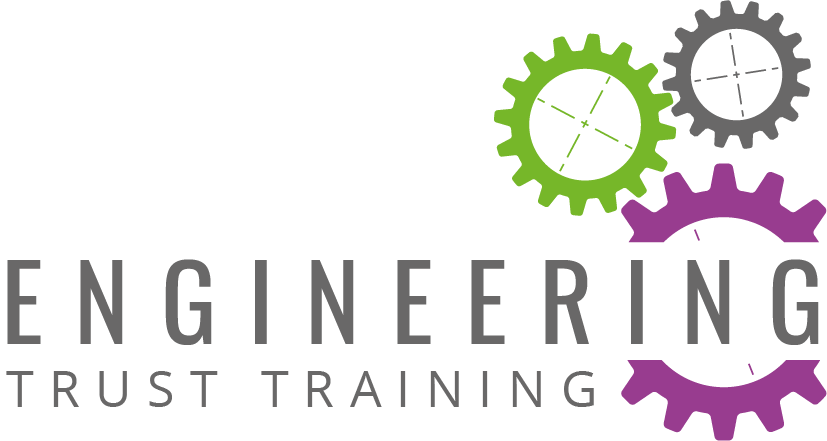
Information, advice & guidance for Employers
Businesses that offer apprenticeships believe they are instrumental to the long term success of the organisation. Whether you are looking to hire someone new or develop an existing employee, apprenticeships are an effective means to develop talent and establish a qualified and motivated workforce. The programmes provide training and upskilling opportunities that are crucial to business growth and sustainability. With latitude for business specific knowledge to be passed on to a new generation of staff, apprenticeships help to plug future skills gaps.
“Taking on apprentices within a small business is not only a cost-effective way of expanding and growing the workforce, but it also offers a unique opportunity to train a person to company procedures and standards from an early point in their career. It also gives you the opportunity to train them specifically to the job that you wish them to fulfil”.
Sarah Jaycock, High Spec Composites.
10 things employers need to know.
1. Apprenticeship Standards
Previously known as ‘Frameworks’, these are the underlying foundations for apprenticeship delivery and there are an eye-watering number of Standards covering every industry imaginable! It is crucial for Standards to align with the skills and capabilities of the role you wish to employ an apprentice. The same applies if an existing member of staff is joining an apprenticeship. Standards are available from level 2 – level 7 and each level has a typical duration. Level 2 for example takes 12-18 months whilst level 3 can take up to 42 months. The apprentice, at the end of the period, must then pass an End Point Assessment (EPA) to complete their programme.
2. Funding
Employers fall into one of two groups.
Levy payers. Employers with a payroll of more than £3 million per year. You will pay 0.5% of your salary bill into your levy pot and the government will top-up that amount each month by 10%.
Non-levy payers. Employers with a payroll under £3 million per year. The Government will pay 95% of the training cost and you will contribute the remaining 5%, this is called co-investment. For example, co-investment for a level 3 Standard with a funding maximum of £21,000 would be £1050.
In both cases, funding covers the training of the apprentice and cannot be used for wages, statutory licences to practice, travel and subsidiary costs, work placement programmes or any fees for setting up your apprenticeship scheme.
3. Picking the right Training Provider
There are different routes for apprenticeship delivery and individual training providers will work to different levels of engagement with you and the apprentice. Finding the right training provider to partner with is key to ensuring your effort and financial commitment don’t go to waste and your apprenticeship scheme is a success.
You can use the government’s ‘Find apprenticeship training’ website to search for providers who deliver apprenticeships within your industry and area. But, before allowing you to narrow the search by location the website will prompt you to select an Apprenticeship Standard. On most occasions, trying to find the exact Standard is a time consuming and a futile exercise. Whereas an apprenticeship provider with experience of delivering Standards within your industry will have the information readily available and in all probability, will also have a few options to align the Standard to the work and the role you have to offer. Prioritise making contact with providers as you will find that a good provider will engage in a meaningful consultation to assess your needs and to offer an Apprenticeship Standard that meets your criteria.
Here is the link: https://findapprenticeshiptraining.apprenticeships.education.gov.uk/courses
4. Recruitment
Finding the right person is probably the most important part of the process. The successful candidate will begin the process to gain a recognised qualification within a system that promotes loyalty and longevity to their employment so, you need to find someone who you want to employ for the long-term.
Most providers will be able to help you with the recruitment, but ultimately it is your choice as to who you employ as your apprentice. It is good to have the training provider involved in the process because a candidate's prior learning and experience has to be taken into consideration when establishing their eligibility for the apprenticeship on offer.
“The recruitment process is very straight-forward and ETT are a pleasure to work with. Candidates are submitted electronically and, once reviewed, we request interviews with those we chose to move forward in the process. All correspondence goes via ETT. Each year we receive a good number of quality candidates who have been interviewed and assessed prior to submission, so we have a good understanding of their background and capability even before we meet them”.
Beverly O’Farrell at FMB Oxford
5. Pay
Apprentices are employed by you from day one, are paid a salary, receive all benefits and treated like any other employee. As mentioned, the funding does not cover wages and all the apprenticeship training and learning must be done within their paid hours. There is a national minimum wage for apprentices which will be £4.81 per hour from April 2022. This can apply to an apprentice under 19 and those aged 19 or over who are in their first year. Those aged 19 or over must then be paid at least the national minimum wage for their age once they have completed their first year.
We encourage employers to be as competitive with their apprentice wages as possible. Similar to recruiting for any role, apprentices will look at what you have on offer in terms of role, training, conditions and pay to decide if yours is an apprenticeship they want to apply for or not.
6. Contracts
There are several compulsory contracts or agreements that must be in place as set out by the ESFA. You must employ the apprentice and provide them with a Contract of Employment, as you would with an individual you take on.
There are then three other documents that the Training Provider will produce and the parties involved will agree upon. Firstly, and in addition to the Contract of Employment, an Apprenticeship Agreement between you (The Employer) and the Apprentice must be in place to capture the specific requirements needed to fund the apprenticeship. Secondly, a Service Level Agreement between you and the Training Provider setting out how the two parties will work together, what the negotiated price will be, how much funding will be drawn and what will be achieved in terms of apprenticeship training. Thirdly, an Apprenticeship Commitment Statement must be agreed and signed between you, the Apprentice, and the Training Provider. This sets out the specific responsibilities of each party, a learning plan detailing the training and off-the-job hours, recognition of any relevant prior learning and who will be involved in the delivery.
7. Apprenticeship Delivery
There are many different providers, each will have a different approach to the way in which they deliver their programmes. Although we all work within the same Apprenticeship Standards, the manner and quality of delivery can differ considerably. Different providers will also have different methods of training the apprentice away from the workplace. Some may deliver via day release, some block release, some online, some face-to-face.
It is important to understand how the provider you select to work with plans to deliver the apprenticeship, where they plan to deliver the apprenticeship and how much support/engagement they will provide you and the apprentice.
If times allows, it is a good idea to procure the apprenticeship provider in the same way that you would for other aspects of your business. Engage with several providers, ask them to set out how they would meet your training needs and what the delivery would look like. You can then go with the provider who best fits your business.
8. Apprentice Mentor
A mentor within a business is an expert in his or her field who is able and willing to pass on their knowledge and experience to the apprentice. They have to be able to monitor an individual’s progress and provide constructive feedback aimed towards further development. Being an apprentice mentor is not just limited to developing a learner’s knowledge and skills in relation to the job they will undertake in the future; they must also support an apprentice's transition into the working environment as many will have come straight from school. This may include helping them to understand how to conduct themselves, work with others and develop confidence in all the areas experienced workers take for granted.
The Mentor doesn’t necessarily have to work with the apprentice all the time. This will depend on the size of your business and the breadth of the apprenticeship programme. In smaller businesses, the apprentice may well work under the mentor all the time. In larger businesses, there is a good chance that the apprenticeship programme will see the person move through several departments and work under many different people within the business. In this case, it is still preferable to have one person centrally who oversees the apprenticeship programme, even if they are not with the apprentice all the time.
“We’re a small company, so we expect our apprentices to take a part in every aspect of our business. During the 3 years, they will be involved with work such as planned maintenance and fault finding on the various machines we have on site, design work, CAD drawing and working in the machine shop on the mill and lathes”.
Alister Bull, EWBS Solutions.
9. 20% Off-the-job
The ESFA define off-the-job (OTJ) as ‘learning which is undertaken outside of the normal day-to-day working environment and leads towards the achievement of an apprenticeship.’ The phrase ‘off-the-job’ can be confusing as you might jump to the conclusion that this learning is done in addition to the apprentice’s hours or must be completed away from the workplace. Neither of these are true. Off-the-job training hours must be logged within an apprentice’s normal working hours, must be related to the Apprenticeship Standard, and must teach them new knowledge, skills or behaviours. Hours can be recorded both in the workplace or away from the workplace such as when the apprentice is studying in college.
The minimum requirement of OTJ training time is calculated using the apprentice’s contracted employment hours across their whole apprenticeship. By way of example, an OTJ hours calculation might be - 52 weeks less 5 weeks’ holiday = 47 weeks’ x 37 hours per week = 1,739 x 0.2 = 347.8 off-the-job hours required per year.
10. End Point Assessment
Every Apprenticeship finishes with the apprentice completing an End Point Assessment (EPA). Conducted by a third-party EPA Organisation (unrelated to the Training Provider), this can consist of a project, multiple choice test, workplace observations or a professional discussion supported by the apprentice’s portfolio. It is your choice as to which EPA Organisation you would like to use and can be selected from a central government register. Together with your training provider, you must decide at what point each apprentice is ready to progress through their Final Gateway and be put forward for their EPA. The EPA will take place within (roughly) 4 months of the Final Gateway.
